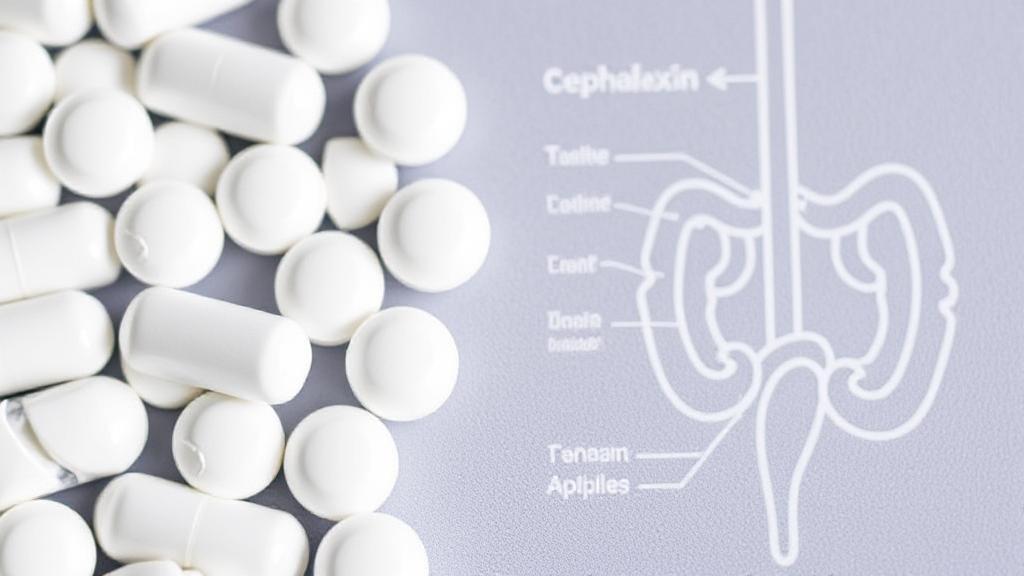Understanding Urinary Tract Infections (UTIs)
Urinary Tract Infections (UTIs) are common infections that affect the urinary system, including the kidneys, ureters, bladder, and urethra. They are typically caused by bacteria, with Escherichia coli (E. coli) being responsible for approximately 80-90% of uncomplicated UTIs. Symptoms include a strong, persistent urge to urinate, a burning sensation during urination, cloudy or strong-smelling urine, and pelvic pain.
What is Cephalexin?
Cephalexin is a first-generation cephalosporin antibiotic that works by interfering with bacterial cell wall synthesis. By inhibiting the synthesis of peptidoglycan, an essential component of the bacterial cell wall, cephalexin causes bacteria to become unstable and die. It is effective against both gram-positive bacteria, such as Staphylococcus saprophyticus and Enterococcus faecalis, and some gram-negative bacteria.
Dosage and Administration
The typical treatment regimen includes:
- 250-500 mg taken orally every 6-8 hours
- Treatment duration of 7-14 days
- Total daily dose should not exceed 4 grams
Note: Always follow your healthcare provider's specific dosing instructions, as they may vary based on infection severity and individual factors.
Benefits and Effectiveness
- Broad-spectrum coverage against common UTI-causing bacteria
- Generally well-tolerated by most patients
- Available in multiple forms (capsules, tablets, suspension)
- Cost-effective compared to newer antibiotics
- Established safety profile
Potential Side Effects
Common side effects include:
- Gastrointestinal issues: Nausea, vomiting, diarrhea, and abdominal pain
- Allergic reactions: Rash, itching, and in rare cases, anaphylaxis
- Yeast infections: Due to disruption of normal bacterial flora
Serious Side Effects
While rare, some patients may experience:
- Severe allergic reactions
- C. difficile infection
- Kidney problems
- Severe skin reactions
Special Considerations
Drug Interactions
Cephalexin may interact with:
- Metformin
- Probenecid
- Blood thinners
- Other antibiotics
Precautions
- Allergies: Patients with known allergies to cephalosporins or penicillins should avoid cephalexin
- Kidney Function: Dosage adjustments may be necessary for patients with impaired kidney function
- Pregnancy and Breastfeeding: Generally considered safe but consult with a healthcare provider
Prevention of Future UTIs
While taking cephalexin, implement these preventive measures:
- Drink plenty of water
- Urinate frequently
- Wipe from front to back
- Urinate after sexual activity
- Consider cranberry supplements
When to Seek Additional Medical Care
Contact your healthcare provider if:
- Symptoms worsen despite treatment
- New symptoms develop
- Side effects become severe
- Fever develops or increases
- Symptoms return after completing treatment
For more detailed information, visit Drugs.com, the Mayo Clinic, or the Centers for Disease Control and Prevention (CDC).
Remember that antibiotic resistance is a growing concern in healthcare. Always take antibiotics exactly as prescribed and never share or save antibiotics for future use.
